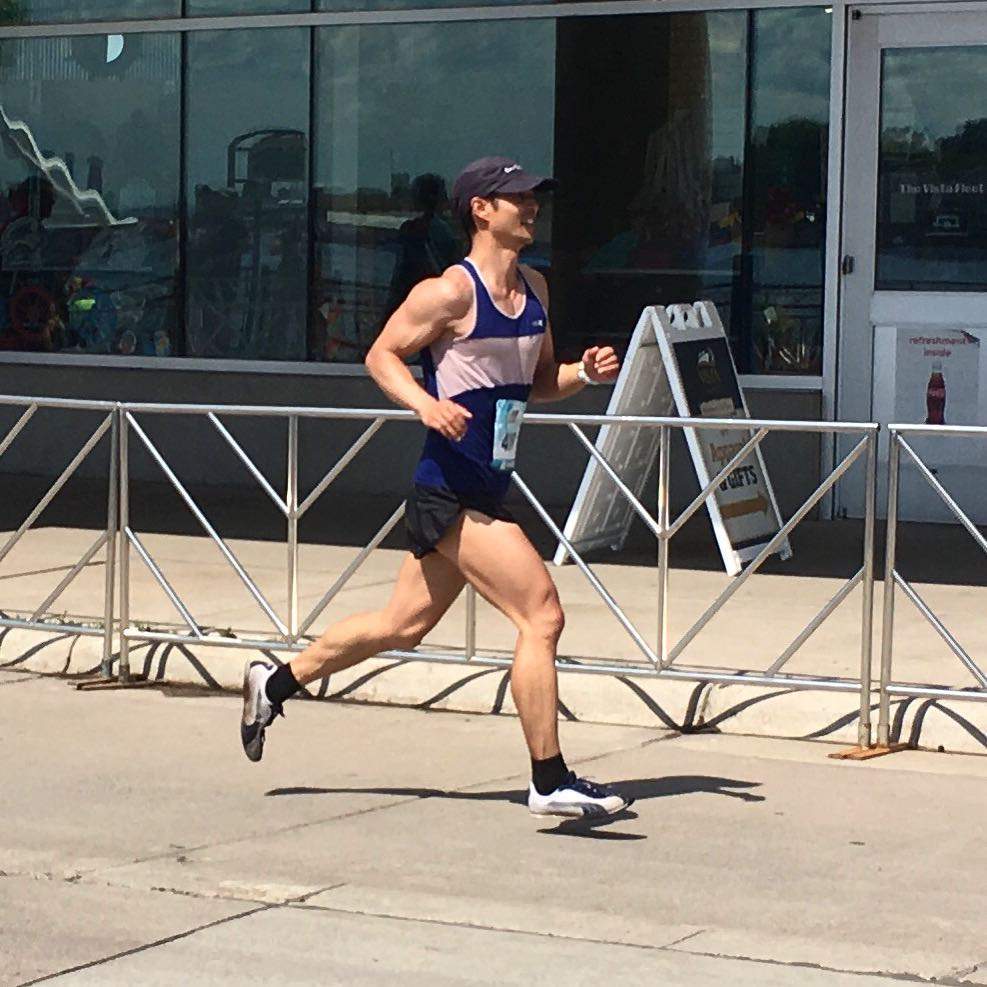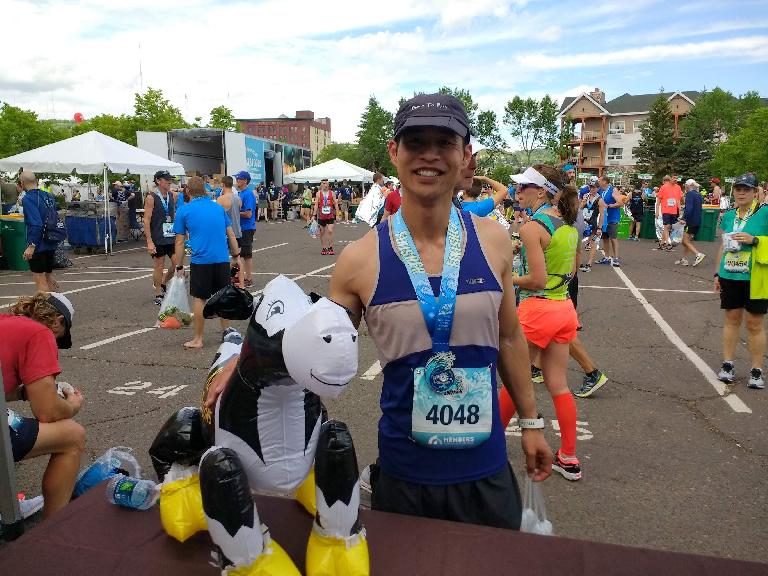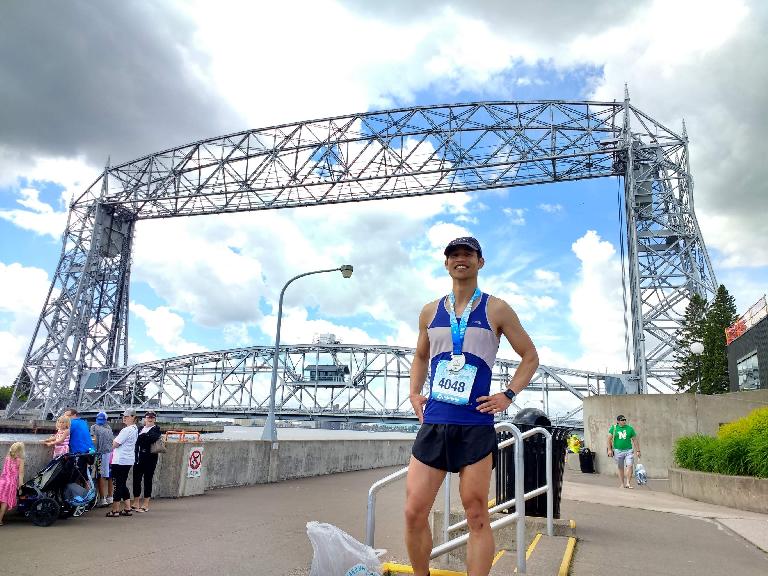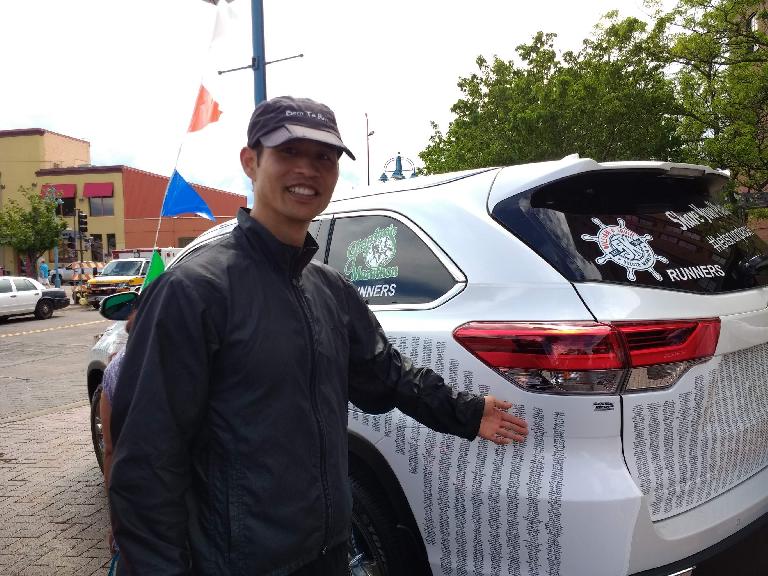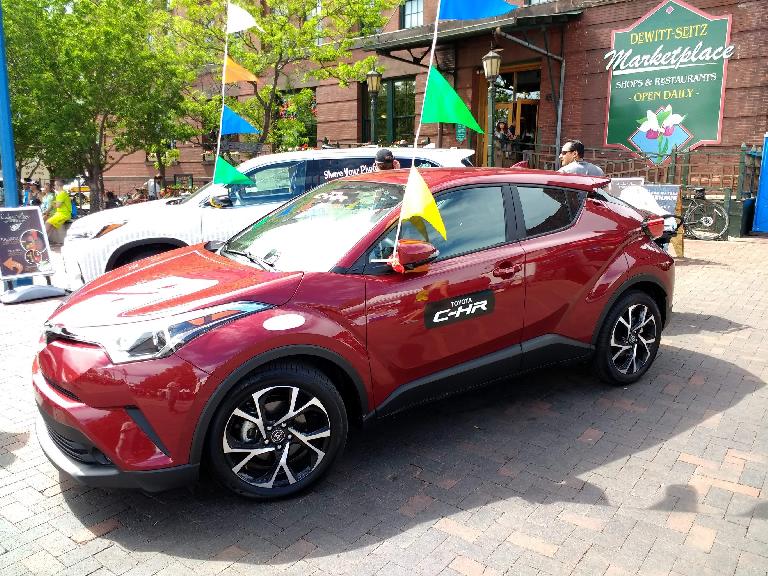Grandma’s Marathon
It was back in 2004 when I first heard about this race: Grandma’s Marathon.
My friend Russ from the (long defunct, I think) Tri-City Triathlon Club raved about the course and the support in this small-town, yet hugely attended marathon in Duluth, Minnesota. I think he had run it a few times despite living in Union City, California. He also told me—presciently, in hindsight—that “if you decide you want to run marathons in all 50 states, this would be a good one to do in Minnesota.”
His recommendation stuck with me all this time, 13 years later. During those years, I have been running marathons all over the U.S. Minnesota happened to be one of the last ones west of the Mississippi River in the contiguous U.S. that I have not done. My good friends Dan and Kiri now live in Minneapolis and Kiri’s parents would generously allow me to stay at their home in Duluth during the weekend of the race. Perfect.
Dan drove us up from Minneapolis to Duluth on Friday night, and John—Kiri’s dad—cooked us a delicious spaghetti dinner. Then, at 5:00 a.m. on Saturday, Dan drove me to the University of Minnesota at Duluth where I hopped on a school bus that shuttled runners to the start in Twin Harbors. The race, you see, was point-to-point, ending in Duluth.
The pre-race shuttles and preparations were perfectly choreographed, and I only had to wait 45 minutes until the start of the race—just enough time for a porta-potty stop. I was walking towards the start line when the Star-Spangled Banner was being sung, and queued up with the 3:15 pace group even though I was shooting for sub-3:30, basically betting that I would slow down the last 6-8 miles of a marathon.
The Race
A few things were apparent a few miles into the race.
First, it was going to be warm for running. The temperatures started in the low-to-mid 60s and the day’s maximum temperature was forecast to be only in the high 60s, but the humidity level was 85%.
Second, the course was not as flat as I was expecting. Kiri had run the half-marathon (i.e, the second half of the marathon) before and reported that it was very flat except for a few hills, but the first half had many gradual rollers. At least there were no hills that were steep or long, and this was certainly the flattest marathon I have run in several years.
Third, the race was very well supported and organized. Despite there being nearly 7,000 people running the marathon distance and no pre-assigned waves, I felt like there was ample room to run (especially due to the road closures) and did not have to weave around other participants. I could run the tangents for the shortest distance possible. Moreover, there were plenty of aid stations (usually every 1.5-2 miles or so) with water, Powerade, sometimes food, and plenty of ice and sponges.
The latter would become handy because of the warmth.
Sometime after running a 45:52 10k, I decided it would be a clever idea to pre-emptively and actively stay cool. So, I started taking cups of ice and dumping some on my head, trying to keep the cubes in place under my hat. This only worked ok as a lot of the ice would tumble to the ground before being captured by the hat. But advice from a volunteer a few miles later proved to be better. “Here, put a sponge underneath your hat instead of ice!” From that point on, I started grabbing wet sponges, sometimes squeezing them onto the back of my neck or the front of my legs before putting them on my head.
The half-marathon point passed after 1:38:44, which was virtually identical to my time for the first half of the Mission Run in the Ozarks Marathon a couple months ago. I was pleased as I knew the second half of Grandma’s would be much easier than that of the Arkansas run, by virtual of not having a monster hill in the middle of it.
As predicted, my mile splits started get worse, and at Miles 17 and 18, they were precisely eight minutes. Not a disaster. From then I was content with maintaining pace in the low-8s, knowing that the entire race before then I had been running in the mid-7s and had banked a bit of time.
Around Mile 25, the 3:25 pace group caught me. I stuck with it for only a minute or so and let it go. This time, unlike in New York, I was keeping a good tab on the time, and at this point I was 99% sure I was going to finish under 3:30. It was more important to maintain pace without blowing up and getting a cramp—or worse, tumbling to the ground due to seized legs like in the Fall Classic Marathon—with a mile-and-a-half to go.
I did speed up momentarily with about three-quarters of a mile to go because I could hear my name being yelled out by none other than Kiri. “Go, Felix!” she yelled along with Dan and her folks behind some metal barricades. I was on the other side of the road or else I would have stopped to give them a hug or, at the very least, a high five.
After that short surge, I had to slow again, but had enough left in the tank to sprint to the finish line with about 200 meters to go. You can even watch my late dash in this official video. I thought it was fantastic that the race had two videocams set up at the finish line for viewing later.
In fact, the whole organizational effort deserved an A+. In addition to the race cams, there were timing mats along the course at 10km, 13.1 miles, 20 miles, 25 miles, and of course the finish, and the data was transmitted to an official iOS and Android app so my friends could track my progress and accurately predict an arrival time as spectators. (I wish this technology was available in 2005, for example, when I went to cheer my friends at Boston and had virtually no idea how they were doing.) And much like the aid stations along the course, the finishing area was super well stocked with liquids and food, including chocolate milk, yogurt, bagels, fruit, etc.
One odd thing was that my trapezius muscles—and maybe my deltoids—were sorer than my legs after the race. I know I do swing my arms quite a bit while running, but this was ridiculous. In fact, they were so fatigued that I could not even raise my arms above my heads without extreme effort. “You should go to the massage tent,” said Chelly, Kiri’s step-mom.
That turned out to be good advice. Although there was a lengthy queue, there was a whole crew of capable massage therapists giving full body massages of 15 minutes or so, for free. The therapist who worked on me was very amiable despite having worked a full day already. “What time did you get here?” I asked. She replied 6:30 a.m., which makes sense because the half marathon started at 6:00.
Russ was right: this was a good marathon to do in Minnesota. In fact, I would say it was probably was the most well-supported marathon I have ever done in any place. Put it on your list if you ever want to run a 26.2-miler in the North Star State.
About the Namesake of the Race
I had always assumed the race was named after—or sponsored by—Grandma’s Cookies manufactured by Frito-Lay.
In fact, it is named after Grandma’s Restaurant in Duluth, which is next to the race finish. In 1977—the race’s first year—it was the only local business that would sponsor the event, for $600. [Source: Wikipedia]
The restaurant is no longer associated with the event due to liability reasons. Yet the race has managed to grow to its current-day size of 17,000+ participants for the 5k, half-marathon, and marathon distances combined. It now also has a budget of $2 million and attracts some of the top talent in the world, including from Kenya.
Race Data
Final time: 3:26:05 (7:52/mile)
Official results
Strava data

